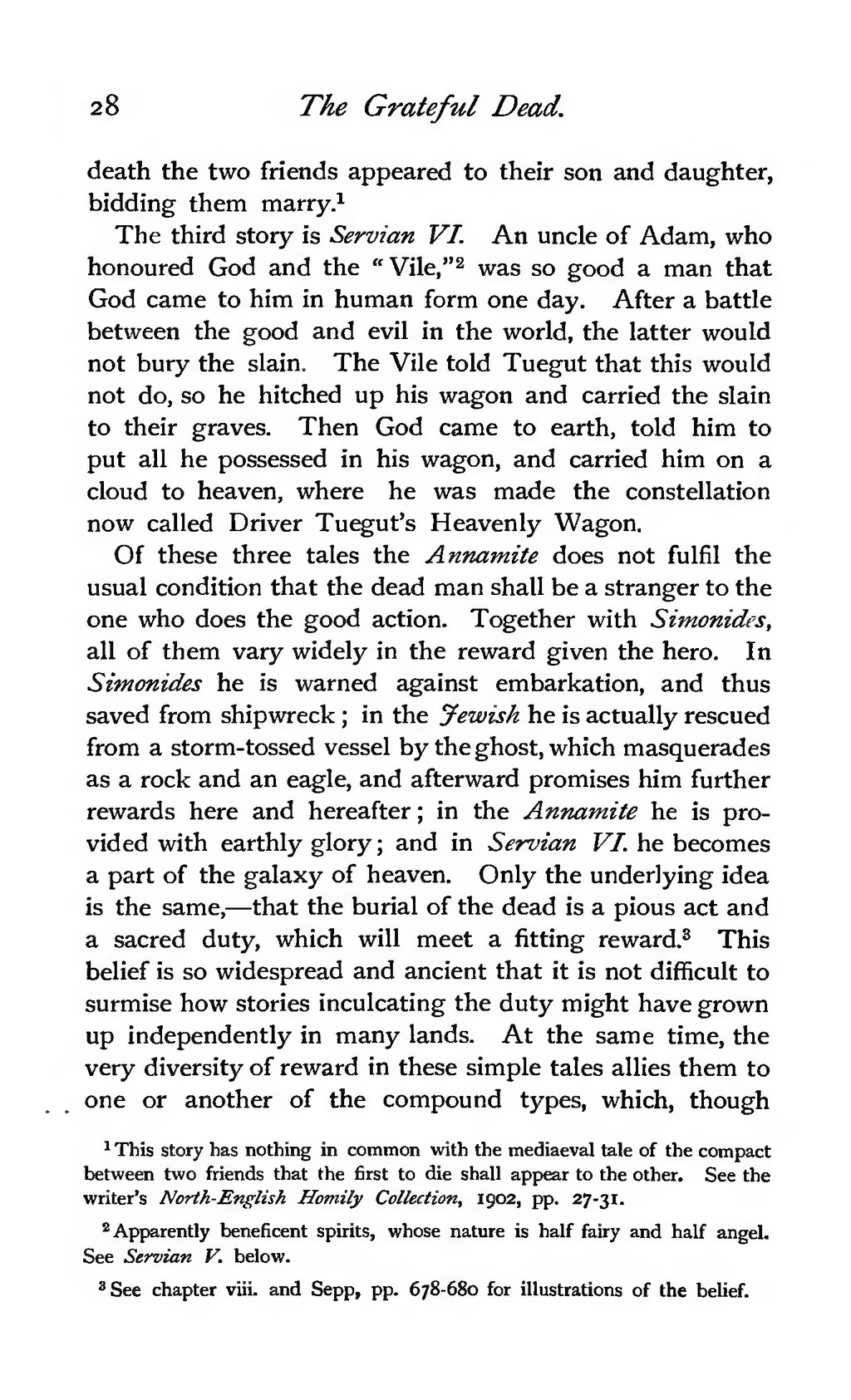death the two friends appeared to their son and daughter, bidding them marry.[1]
The third story is Servian VI. An uncle of Adam, who honoured God and the "Vile,"[2] was so good a man that God came to him in human form one day. After a battle between the good and evil in the world, the latter would not bury the slain. The Vile told Tuegut that this would not do, so he hitched up his wagon and carried the slain to their graves. Then God came to earth, told him to put all he possessed in his wagon, and carried him on a cloud to heaven, where he was made the constellation now called Driver Tuegut's Heavenly Wagon.
Of these three tales the Annamite does not fulfil the usual condition that the dead man shall be a stranger to the one who does the good action. Together with Simonides, all of them vary widely in the reward given the hero. In Simonides he is warned against embarkation, and thus saved from shipwreck; in the Jewish he is actually rescued from a storm-tossed vessel by the ghost, which masquerades as a rock and an eagle, and afterward promises him further rewards here and hereafter; in the Annamite he is provided with earthly glory; and in Servian VI. he becomes a part of the galaxy of heaven. Only the underlying idea is the same,—that the burial of the dead is a pious act and a sacred duty, which will meet a fitting reward.[3] This belief is so widespread and ancient that it is not difficult to surmise how stories inculcating the duty might have grown up independently in many lands. At the same time, the very diversity of reward in these simple tales allies them to one or another of the compound types, which, though
- ↑ This story has nothing in common with the mediaeval tale of the compact between two friends that the first to die shall appear to the other. See the writer's North-English Homily Collection, 1902, pp. 27-31.
- ↑ Apparently beneficent spirits, whose nature is half fairy and half angel. See Servian V. below.
- ↑ See chapter viii. and Sepp, pp. 678-680 for illustrations of the belief.
